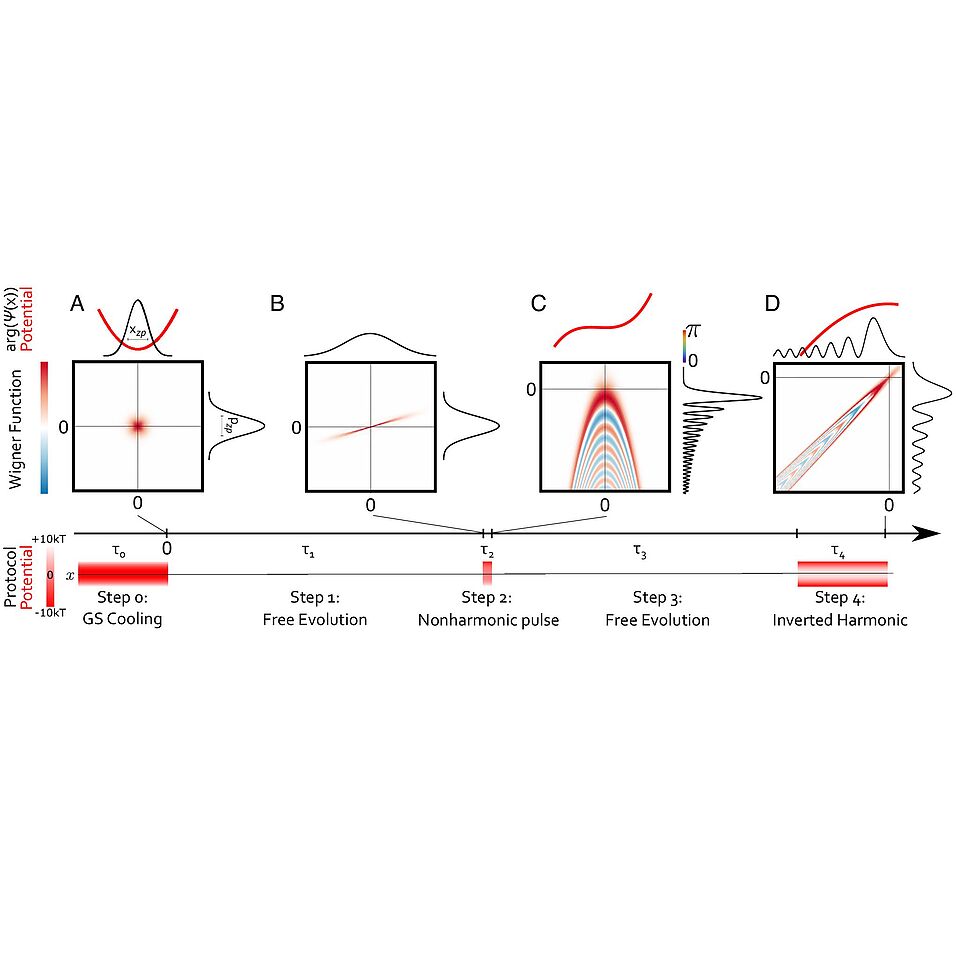More specifically, we suggest and theoretically analyze a scheme to prepare and detect non-Gaussian quantum states of an optically levitated particle via the interaction with light pulses that generate cubic and inverted potentials. The main idea is that a pulsed interaction between light and the particle creates a phase modulation of the particle wavepacket. For a cubic potential this is equivalent to interacting with a sub-wavelength diffraction (phase) grating that prepares the desired delocalized non-Gaussian quantum state, which in turn can be observed at a later stage as spatial interference pattern. By using only short interaction times with nonlinear optical potentials and by letting the system freely evolve in-between, we minimize decoherence by scattering and increase the wavepacket size. We predict specifically that for a silica particle of radius r = 50 nm (mass of approx. 6x1e8 a.m.u.) interference is observable within a few milliseconds. Since operating on such a short time scale dramatically reduces the requirements on decoherence due to gas pressure and blackbody radiation, our scheme works in a room temperature environment and ultra-high vacuum level (1e-10 mbar). In comparison to other approaches, we neither rely on external non-linearities, e.g. by coupling to external qubits or induced by measurement, nor on internal degrees of freedom. It only exploits the evolution in a fast, time-varying potential landscape. In the absence of optical fields, the particle is stabilized electrostatically and hence practically stays at the same place during the whole time. This means that the same particle can be re-used for each measurement run. In the long run, this result provides a route to experimentally realizing quantum superpositions of large mass and macroscopic separation.
The scheme is a natural upgrade of earlier experiments on optical potential landscape control for nanoparticles by our very own Mario Ciampini, hence the name “The Super-Mario Protocol”.
Publication in PNAS:
Lukas Neumeier, Mario A. Ciampini, Oriol Romero-Isart, Markus Aspelmeyer, Nikolai Kiesel
“Fast quantum interference of a nanoparticle via optical potential control”

